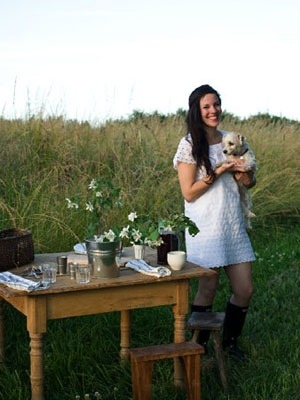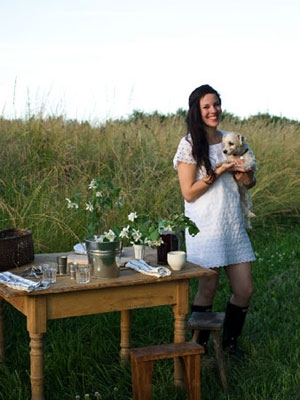10 Tips For Setting A Natural-Looking Table
Chelsea Fuss demonstrates how to create an organic table setting for three friends at a local historic farm and community garden. The goal is to create table settings that are simple, a bit undone, and with a focus on the food and guests.
1. The food is the centerpiece. Don't overwhelm your guests with tall bouquets of flowers and unnecessary décor. Think about the colors of the food, the scents, and plan around them. Make the food the centerpiece and add everything else around it.
2. Think about your location and time of day and make your table appropriate for the setting and time of day. I like table settings that "grow" from their space. For our dinner in the meadow, we kept things casual and earthy and used pops of white that glow in the evening light. Consider lighting for evening and the style and colors of your surroundings. Don't try to compete with what's already there.
3. Think in colors. No need to go drafting up a color scheme, but do think about the ebb and flow of color on your table. For this table I focused on keeping everything natural with a lot of wood and pops of white, soft blue, green, and deep red. The safest bet is to keep the backdrop (your table) fairly neutral and let the food bring the color.
4. Food looks best on white. With a few exceptions, food looks the most appetizing served on a white surface. Think about lining old baskets with white parchment paper to serve crackers, or opt for a collection of simple white dishes so you always have them on hand.
Dining is all about the senses so I like to include flowers or plants on my tables, but I always keep them simple. Forgo the florist bouquet for a Mason jar stuffed full of buttercups or a simple herb plant wrapped in newspaper. A tip: Cut the flowers low so your guests can see across the table but keep it natural by adding a few sprawling branches or vines poking out. Group mismatched vases or use drinking glasses or jars as vases.
6. Consider mix and match seating. Avoid a wedding look by keeping chairs un-matching. Try benches, camp stools or old painted chairs.
7. Use what you have. Avoid the urge to purchase a whole new cabinet of décor for a dinner party. You'd be surprised by what you have in your cupboard (or fridge), or what the local second hand shop has to offer. The best parties I've thrown were on a budget.
8. Place settings don't need to match. Utensils don't need to match nor do plates or napkins. As long as you stick to a loose color scheme, the mixing and matching will keep the table interesting. I like to use the same color napkins but all with different patterns; and I also love mixing and matching vintage silverware.
9. Break the rules. Set your table with the glasses and utensils you'll actually be using. Don't worry about following a chart if you won't be serving all the courses those utensils are needed for!
10. Have fun and relax! It's the company that matters the most.
Styling and concept by Chelsea Fuss.
Chelsea Fuss is a freelance lifestyle blogger, event designer and a commercial floral and prop stylist based out of Portland, Oregon. Lisa is a Portland-based photographer specializing in lifestyle, fashion and on-location shooting. She is widely known for her street-style photography on Urban Weeds.
Kinfolk is guide to small gatherings, a marriage of our appreciation for art and design and our love for spending time with family and friends. Click here to read more of Kinfolk online.

